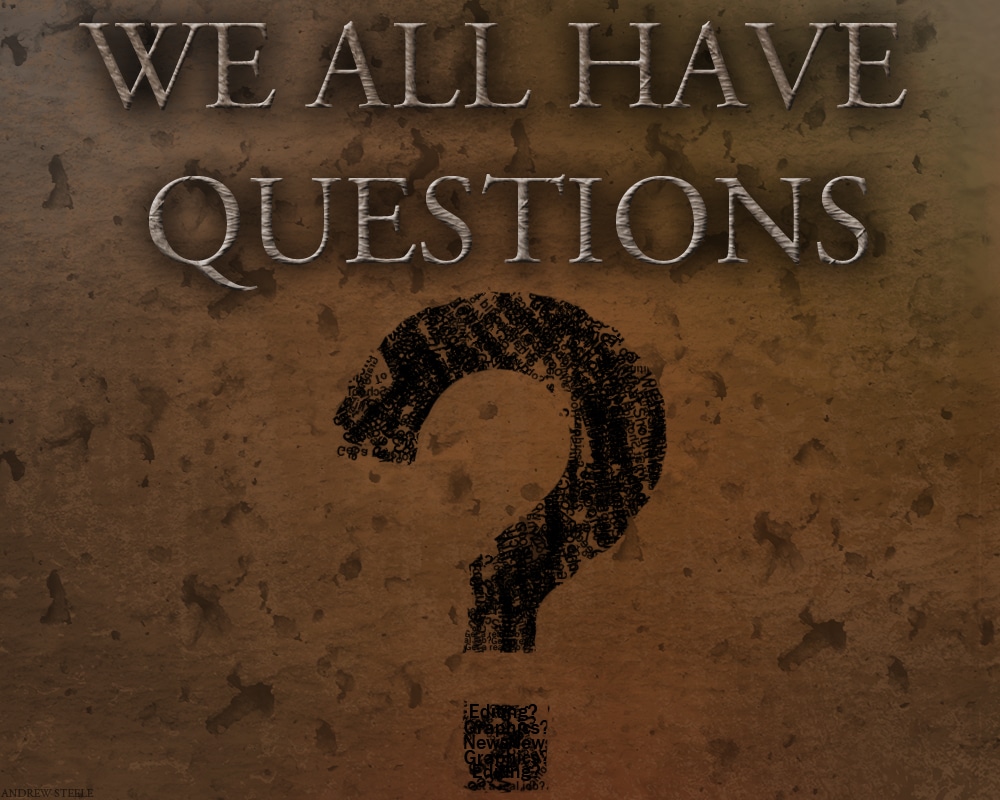How to Stop Worrying and Love Your Q&A Session

It’s your first conference talk, and you’re as ready as ready gets. Your outfit is on point, you’ve practiced your talk to perfection, you’ve backed up your slides on two flash drives plus your laptop (just in case), and everything is under control. Well, except for one thing: the dreaded Q&A session. There’s no telling what will happen when your prepared talk ends, and the spontaneous Question and Answer session, or Q&A, begins. Because of the uncertainty and unpredictability, a lot of budding scientists seriously sweat the Q&A, and would rather just skip it if they could.
Despite its bad rap, the Q&A session is actually my favorite part of giving a talk! It’s my chance to get feedback from my audience by learning how they perceive and react to my presentation. This opens me to lots of perspectives I might not have thought about before. Also, the spontaneous element is usually a welcome relief after a long spell of talking through a pre-arranged spiel. And it feels more like an organic conversation.
Well, an organic conversation in front of a lot more people than your typical daily dish, which is a bit scary. Even when you love the Q&A, it still takes some work to fight off those on-the-spot nerves and keep it fun and engaging. From my experience on both sides of the podium, I’ve compiled some tips for rocking that Q&A and making it your friend instead of foe.
Mind the Time
If you are giving a timed talk, make sure you leave adequate time for the Q&A session. While it’s tempting to short the Q&A time by talking longer, you run the risk of exceeding your set time and either being cut off by the moderator or becoming persona non grata to the audience. The Q&A session is also a prime opportunity for your listeners to interact with you and your research. It allows them to internalize what you told them better than if you just talked at them the entire time.
Have Appendix Slides
Really want to describe that new technique you’re using in nitty-gritty detail, but want to keep your presentation within its allotted time? Trim that elaborate method slide from your main talk, but keep it as an appendix at the end of your talk. Then, if someone asks a question about it, presto! Pop up your handy visual aid that you kept just in case of such an event!
Anticipate Some of Those Questions
Questions can arise for a number of reasons during a presentation. Some of them are very thoughtful and indicate the questioner is highly engaged. For instance, they may want more details about something you glossed over in the interest of time. Or maybe they’re interested in further applications of your work. Others will indicate that they either misunderstood you, or spaced out during your talk, and need a gentle reminder or clarification. And there will always be the occasional questioner who seems to be trying to fulfill a participation requirement, since you’re not exactly sure why they’re asking what they are asking. Anticipating these possibilities will help you prepare beforehand. That way you can diagnose the question in real time so you can better address what the questioner is after. Which brings us to our next tip:
Make Sure You Understand the Question
It’s easy to mishear or misunderstand a question in real time, either because the person is speaking quietly, or with an accent, or they phrase the question in a way that is unclear. A good response in this scenario is, “If I understand right, the question is…” and then repeat the question back to them as you understand it. Let them confirm or correct what you have said. This is also helpful for your audience, who likely also did not hear the question clearly, and gives you more time to think.
Speaking of time to think, another trap in Q&A is to start thinking about your response before the person has finished speaking. Then, you may fail to catch their drift and answer the wrong question. Do think on your feet, but be in the moment with the questioner, and make sure you understand what they are after before you launch into your response.
Respect the Questioner
This cannot be emphasized enough. Even if they obviously zoned out while you were talking, or say something that seems pointless or bizarre, always keep it positive and maintain their dignity.
Prepare Yourself
Every now and then, you’ll get a seemingly hostile question, possibly from someone at a competing lab that wants to show off. Or the questioner may just have a confrontational style that is part of their lab culture. Be cheerful and confident. You’ll come off as competent and in control.
Don’t Panic Over the Q&A!
So, you understand the question, it’s not hostile, but it’s very tough! You have no back-up slides to address it because, quite honestly, it is something you have never thought of before! This seems scary, but actually is a great way to make us better scientists; by making us see what we would not have seen otherwise. We don’t know everything, and in fact every experiment and presentation would be pretty pointless if we did. So take a deep breath, and be honest, and even congratulatory to the questioner for broadening your perspective. Feel free to process their question out loud spontaneously and suggest how you might consider this further in the future. And then move on.
Practice Makes Perfect
By courageously engaging with the uncertainty of the Q&A session, it will lose its terror, you’ll gain confidence, and it will go better each time. Maybe it will be your favorite part of a conference talk one day too!